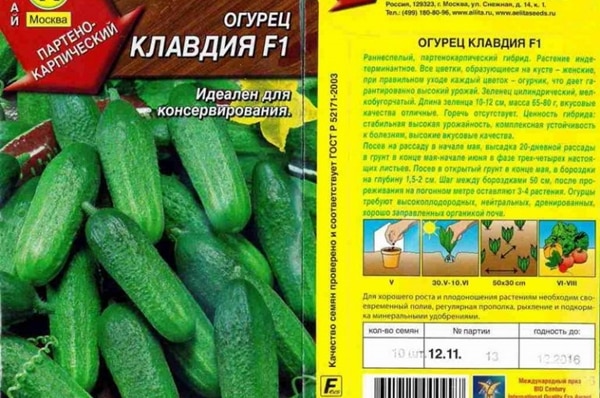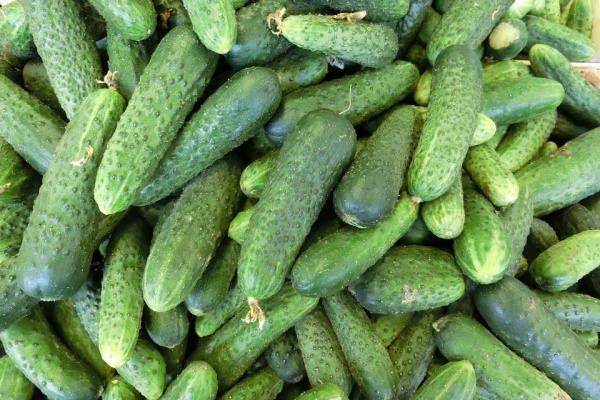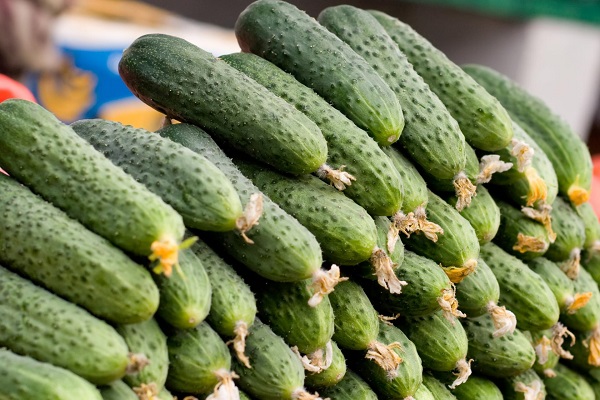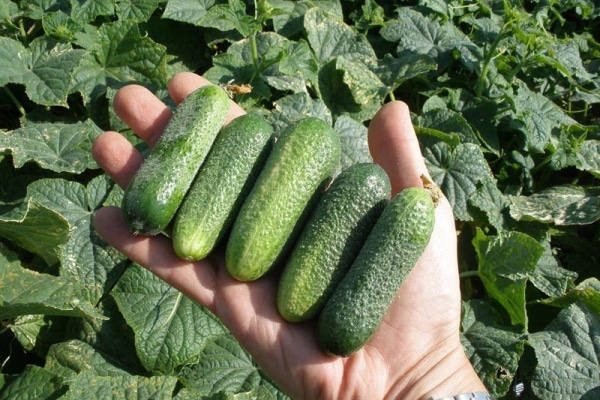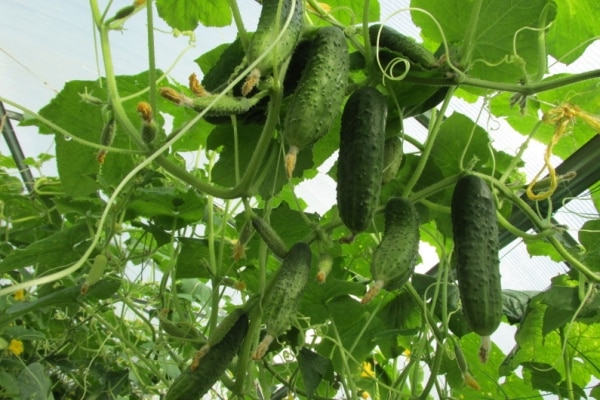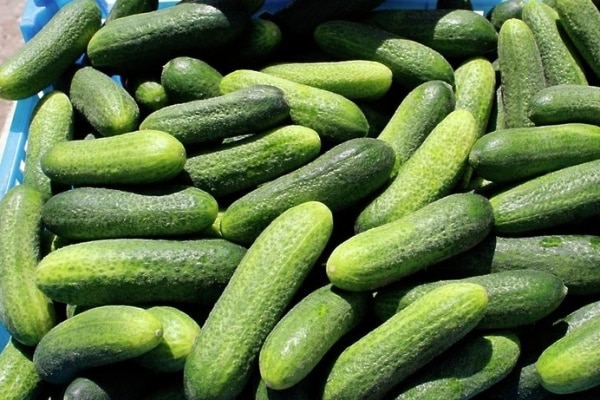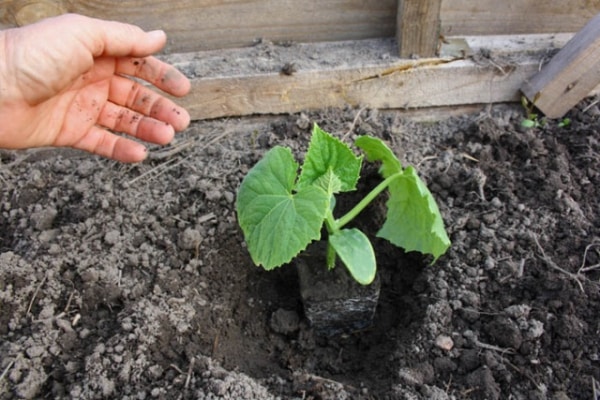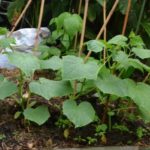Vegetable growers first tried the Claudius f1 cucumber in 1999; for many it immediately became a favorite. The hybrid variety is distinguished by its reliability and yield stability. Producers of Claudius f1 seeds give the following characteristics of cucumber:
- universal (suitable for growing indoors and outdoors);
- indeterminate bush (growth of vines unlimited by the inflorescence);
- tolerates slight shading;
- parthenocarpic (forms an ovary without pollination by bees)
- resistant to diseases;
- high-yielding (10-20 kg/m2);
- early ripening (48-52 days);
- the fruits are small (65-85 g, 10-12 cm), finely tuberculate, tasty;
- suitable for preservation and fresh consumption;
- high commercial quality, tolerate transportation well.
In 2015, a twin cucumber variety, Claudia Agro, from Agrofirm Poisk, appeared on the market. According to reviews from vegetable growers, no significant differences from the Claudius f1 hybrid were found.
Growing
Hybrid Claudius f1 pleases with crispy cucumbers throughout the season until frost. The yield in open ground is consistently 10 kg or more. In protected soil, proper care will allow you to get more than 20 kg of marketable cucumber. In the southern regions, you can grow the Claudius f1 hybrid by direct planting in the ground. But the seedling method allows you to get the first cucumbers already in mid-June.
Seedling
Growing seedlings allows you to extend the fruiting time of white cucumbers by more than a month. The date for sowing seeds is calculated based on the conditions of the region and the method of cultivation. Usually this is the end of April - beginning of May.
Dry heating of seeds for 1-2 months is popular among gardeners. This procedure is indeed carried out on an industrial scale, but at home it is quite difficult to achieve a stable temperature. Hybrid seeds from trusted manufacturers usually have high germination rates and do not require dry heating.
To speed up germination, seeds of the Claudia f1 variety can be pre-germinated:
- seeds are poured for 15-20 minutes with water at 50-60℃;
- if some seeds float during heating in water, they are discarded;
- 2-3 layers of porous loose paper are moistened with warm water;
- the seeds are carefully laid out at a short distance from each other;
- cover with another layer of damp paper on top;
- the paper “planter” is placed in a warm place (26-27 ℃) for a day;
- moisten the dried napkin.
The hatched seeds are planted in separate pots with a volume of 400-500 ml. The cucumber variety Claudia f1 loves loose, organic-rich, well-drained soil.
It’s good if one of the components of the soil mixture is garden soil from the planned garden bed. Then the seedlings will more easily tolerate transplantation and adaptation.
Compost, humus, sand, and sawdust are mixed with garden soil. The bottom of each pot should have many wide holes to allow excess water to drain freely. This will protect the seedlings from souring.
Seedling care includes:
- watering with warm water 20-24℃;
- extending daylight hours using lighting;
- feeding with complex mineral fertilizer at the age of 2 weeks;
- hardening in the fresh air for a week before transplanting into open ground.
Planting of seedlings in a permanent place is done at three weeks of age. The bushes should already form 2-3 true leaves. It is better not to delay replanting; overgrown cucumber seedlings do not take root well and the overall yield is lost.
The soil
Beds for cucumbers are prepared every year in a new place. It’s good if cabbage, tomatoes, and root vegetables grew here last season. Places after vegetables from the pumpkin family are not suitable for cucumbers.
In a greenhouse adapted for growing Claudius f1 cucumbers, the soil will have to be changed annually to a depth of 30 cm. This will protect the plants from most infections and pests.
Garden soil is lightened and enriched with organic components: sawdust, compost, peat, humus. Before planting cucumbers, water the soil generously with hot water.
Watering
Cucumbers moved to us from tropical rainforests, so they are very demanding of heat and watering.
Important!
On cool days, the Claudius f1 hybrid should not be watered, since most fungi infect this crop at temperatures below 17 ℃ and high humidity.
And on hot days, it is necessary to constantly monitor the condition of the soil and prevent it from drying out and forming a hard crust on the surface. The root of cucumbers grows in the top layer, so it suffers greatly from a lack of moisture and oxygen. Mulching plants with sawdust or peat will help improve soil aeration and reduce evaporation.
Bush formation
Seedlings of Claudius f1 cucumbers are transplanted carefully, without disturbing the earthen ball with roots. 3-4 bushes should fit per 1 m2 in open ground, 4-5 in a greenhouse.
The growth type of the Claudius f1 hybrid is indeterminate. The lashes stretch out long, the bush turns out to be quite powerful. Therefore, this hybrid is not very suitable for growing in a low greenhouse without support.
For normal growth and development, cucumbers of the Claudia f1 variety require garters to trellises. This will allow for normal planting ventilation and prevent contact of fruits with the soil.
Until 5-6 true leaves, the plant is not allowed to form an ovary and all inflorescences and side shoots are removed. During this time, the bush will develop a sufficient root system for normal growth and fruiting.
The first side shoots of the Claudius f1 hybrid are pinched after 2-3 leaves, the next ones after 3-4. This will allow air to circulate normally between the plants and protect against most fungal diseases.
Regular rejuvenation of bushes by pruning fruiting vines and yellowed leaves allows you to obtain a new cucumber ovary until late autumn.
Feeding
Hybrid Claudius f1 is a high-yielding variety with the formation of a powerful bush.Therefore, it needs fertilizing once every two weeks with mineral fertilizers.
The increase in vegetative mass requires the addition of nitrogen; the abundant bunched ovary will not grow fully without potassium-phosphorus additives. The easiest way is to use specially prepared complex mineral fertilizers for cucumbers. You can alternate mineral fertilizers with organic ones (infusion of mullein or bird droppings).
Harvest
The yield of the cucumber hybrid Claudius f1 consistently pleases all vegetable growers who have tried this variety.
Greens of the Claudia f1 variety are not prone to overgrowing, but regular harvesting will allow new fruits to appear faster.
The ovary is formed in bunches of 2-3 cucumbers. The greens are neat, small in size, usually do not exceed 10-12 cm. The skin is thin, bright green, finely tuberous, without pronounced spikiness. The taste of cucumbers is pleasant, sweetish; bitterness is excluded by breeders. The pulp is aromatic, elastic, without voids. The description of the Claudia f1 variety by the manufacturer fully corresponds to the results obtained by vegetable growers. Reviews about it are most often positive and even enthusiastic.
Zelentsy show excellent results when harvested in winter, are highly crispy and retain their shape.
If you take into account all the features of caring for the Claudius f1 hybrid, the beds will delight you with delicious cucumbers all season long.

